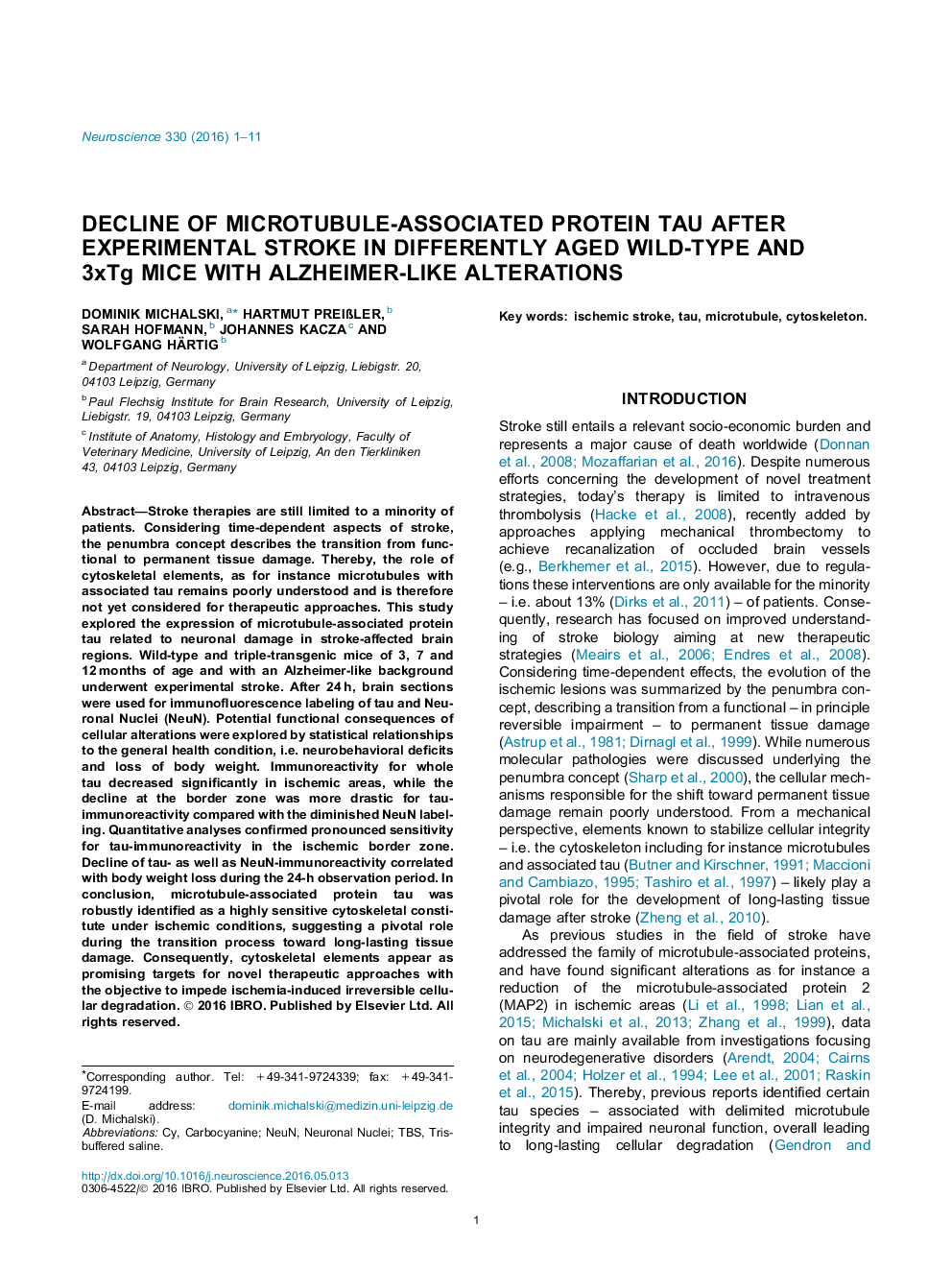| Article ID | Journal | Published Year | Pages | File Type |
|---|---|---|---|---|
| 6270951 | Neuroscience | 2016 | 11 Pages |
â¢Microtubule-associated protein tau declined significantly in areas of ischemic stroke.â¢Tau-immunoreactivity is more ischemia-sensitive than NeuN-immunolabeling.â¢Cytoskeletal constitutes are promising targets after ischemic stroke.
Stroke therapies are still limited to a minority of patients. Considering time-dependent aspects of stroke, the penumbra concept describes the transition from functional to permanent tissue damage. Thereby, the role of cytoskeletal elements, as for instance microtubules with associated tau remains poorly understood and is therefore not yet considered for therapeutic approaches. This study explored the expression of microtubule-associated protein tau related to neuronal damage in stroke-affected brain regions. Wild-type and triple-transgenic mice of 3, 7 and 12Â months of age and with an Alzheimer-like background underwent experimental stroke. After 24Â h, brain sections were used for immunofluorescence labeling of tau and Neuronal Nuclei (NeuN). Potential functional consequences of cellular alterations were explored by statistical relationships to the general health condition, i.e. neurobehavioral deficits and loss of body weight. Immunoreactivity for whole tau decreased significantly in ischemic areas, while the decline at the border zone was more drastic for tau-immunoreactivity compared with the diminished NeuN labeling. Quantitative analyses confirmed pronounced sensitivity for tau-immunoreactivity in the ischemic border zone. Decline of tau- as well as NeuN-immunoreactivity correlated with body weight loss during the 24-h observation period. In conclusion, microtubule-associated protein tau was robustly identified as a highly sensitive cytoskeletal constitute under ischemic conditions, suggesting a pivotal role during the transition process toward long-lasting tissue damage. Consequently, cytoskeletal elements appear as promising targets for novel therapeutic approaches with the objective to impede ischemia-induced irreversible cellular degradation.
